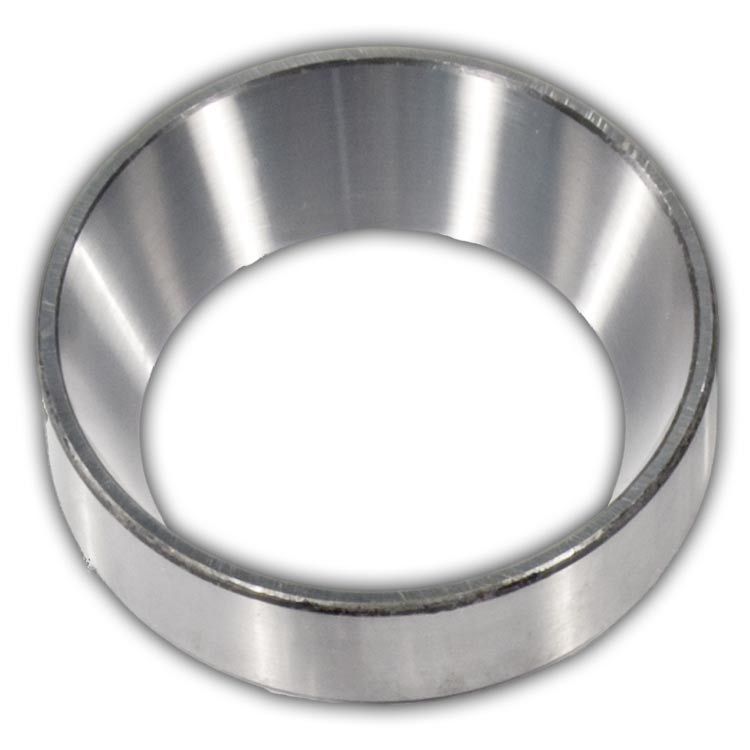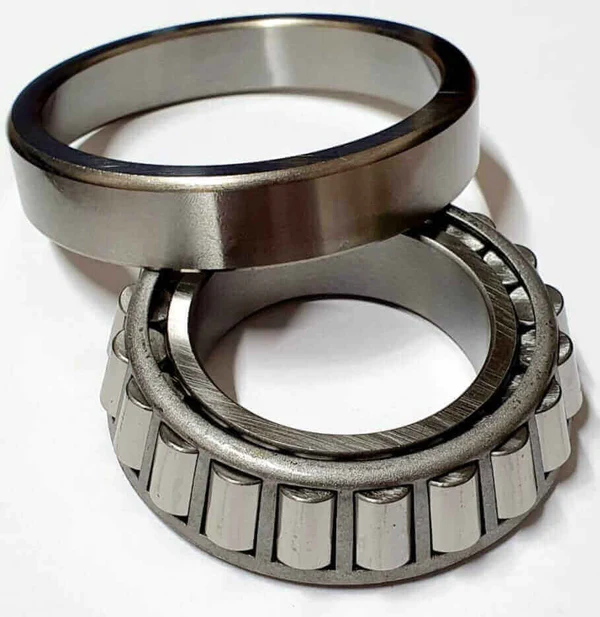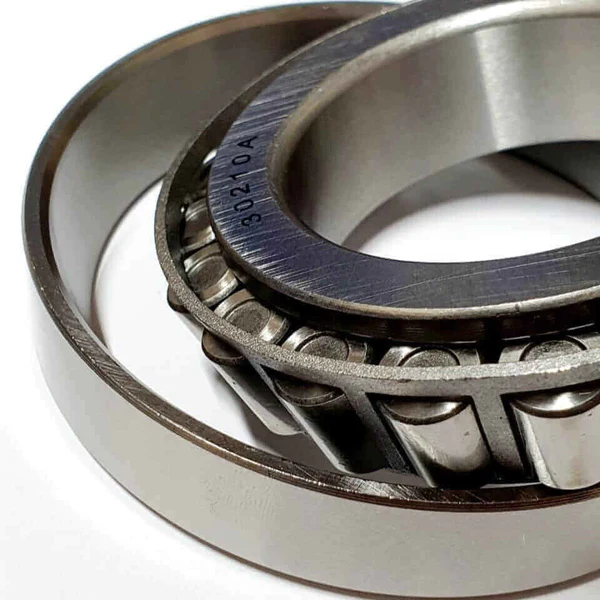Product Description
25.4*33.338*27mm Drawn Cup Needle Roller Bearing RC162117 RC-162117
Features of RC Needle roller bearing
Three pieces needles equipped to be locking assembly function.
Torque increases double of the normal HF Model.
Allow high inHangZhou frequencies due to their low mass .
Catalogue of RC needle bearing
| Bearing Designation | Mass Approx | Designation | |||
| Fw | D | C | Torque | ||
| g | mm | Nm | |||
| RC02 | 2 | 3.175 | 7.15 | 6.35 | 0.32 |
| RC040708 | 3.5 | 6.35 | 11.112 | 12.7 | 2.03 |
| RC040708-FS | 3.5 | 6.35 | 11.112 | 12.7 | 2.03 |
| RC061008 | 4.7 | 9.525 | 15.875 | 12.7 | 5.45 |
| RC061008-FC | 4.7 | 9.525 | 15.875 | 12.7 | 5.45 |
| RC57108 | 9.2 | 12.7 | 19.05 | 12.7 | 8.84 |
| RC57108-FS | 9.2 | 12.7 | 19.05 | 12.7 | 8.84 |
| RC101410 | 14.5 | 15.875 | 22.225 | 15.88 | 16.9 |
| RC101410-FC | 14.5 | 15.875 | 22.225 | 15.88 | 16.9 |
| RC121610 | 16.2 | 19.05 | 25.4 | 15.88 | 23.3 |
| RC121610-FS | 16.2 | 19.05 | 25.4 | 15.88 | 23.3 |
| RC162110 | 17 | 25.4 | 33.338 | 15.88 | 49.6 |
| RC162110-FC | 17 | 25.4 | 33.338 | 15.88 | 49.6 |
| RCB061014 | 12 | 9.525 | 15.875 | 22.22 | 4.83 |
| RCB061014-FS | 12 | 9.525 | 15.875 | 22.22 | 4.83 |
| RCB57114 | 16 | 12.7 | 19.05 | 22.22 | 7.9 |
| RCB57114-FC | 16 | 12.7 | 19.05 | 22.22 | 7.9 |
| RCB101416 | 21.3 | 15.875 | 22.225 | 25.4 | 15.4 |
| RCB101416-FS | 21.3 | 15.875 | 22.225 | 25.4 | 15.4 |
| RCB121616 | 26.5 | 19.05 | 25.4 | 25.4 | 20.9 |
| RCB121616-FC | 26.5 | 19.05 | 25.4 | 25.4 | 20.9 |
| RCB162117 | 44.8 | 25.4 | 33.338 | 26.99 | 45 |
| RCB162117-FS | 44.8 | 25.4 | 33.338 | 26.99 | 45 |
/* March 10, 2571 17:59:20 */!function(){function s(e,r){var a,o={};try{e&&e.split(“,”).forEach(function(e,t){e&&(a=e.match(/(.*?):(.*)$/))&&1
| Cage: | With Cage |
|---|---|
| Rows Number: | Single |
| Load Direction: | Radial Bearing |
| Style: | With Outer Ring, Without Inner Ring |
| Material: | Gcr15 |
| Type: | Needle |
| Customization: |
Available
| Customized Request |
|---|

Customization and Machining of Cup Bearings for Specific Applications
Yes, cup bearings can be customized or machined to suit specific applications, and this customization can involve several aspects:
1. Material Selection: Depending on the application’s requirements, cup bearings can be manufactured from different materials such as steel, stainless steel, bronze, or other alloys. The choice of material can impact factors like corrosion resistance and load capacity.
2. Size and Dimensions: Cup bearings can be customized in terms of their inner and outer diameters, width, and overall dimensions to fit the specific space and load requirements of the machinery or equipment they are intended for.
3. Lubrication: Some applications may benefit from special lubrication requirements. Customized cup bearings can be pre-greased with specific lubricants or seals to withstand extreme temperatures, contamination, or other environmental factors.
4. Seals and Shields: In harsh environments, customized cup bearings can be equipped with additional sealing or shielding to protect against contaminants and moisture, ensuring reliable performance in challenging conditions.
5. Load Capacity: Custom cup bearings can be engineered with higher load-carrying capabilities to support heavy loads in specialized machinery, such as construction equipment or industrial presses.
6. Mounting Arrangements: Cup bearings can be customized with unique mounting configurations or flanges to simplify installation or address specific spatial constraints.
7. Coatings: For applications where anti-corrosion properties are essential, customized cup bearings can be coated with materials like zinc or nickel for added protection.
Customization and machining of cup bearings are often carried out by manufacturers or suppliers with expertise in bearing solutions. The goal is to tailor the bearings to meet the precise demands of the application, ensuring optimal performance, reliability, and longevity.

Considerations for Selecting Cup Bearings
Choosing the right cup bearings for an application involves several key considerations to ensure optimal performance:
1. Load Requirements: Determine the axial and radial loads that the cup bearings will need to support. Consider both static and dynamic loads to select bearings with suitable load-carrying capacities.
2. Operating Speed: Assess the rotational speed of the application. High-speed applications may require bearings designed for reduced friction and heat generation.
3. Environmental Conditions: Evaluate the environment in which the bearings will operate. Factors such as temperature, moisture, and exposure to contaminants can affect the choice of bearing material and sealing options.
4. Precision and Tolerance: Determine the required precision and tolerance levels for the application. Precision cup bearings are essential for applications where precise positioning or low runout is critical.
5. Lubrication: Consider the lubrication method. Some cup bearings are self-lubricating, while others require regular maintenance. The choice depends on the application’s accessibility and the need for maintenance-free operation.
6. Material Selection: Select bearing materials based on factors like load, corrosion resistance, and environmental impact. Common materials include steel, stainless steel, bronze, and plastic.
7. Bearing Type: Choose between various cup bearing types, such as tapered roller bearings, ball bearings, or needle roller bearings, depending on the specific application requirements.
8. Mounting and Installation: Consider the ease of mounting and installation. Some cup bearings may require special mounting considerations, and proper installation is crucial for optimal performance.
9. Cost Considerations: Evaluate the budget constraints of the project. While it’s essential to select high-quality bearings, balancing performance with cost-effectiveness is vital.
10. Manufacturer and Supplier: Work with reputable manufacturers and suppliers who can provide technical expertise, quality assurance, and support for selecting the right cup bearings.
By carefully considering these factors, you can make an informed decision when selecting cup bearings that align with the specific needs of your application.

Components of a Cup Bearing Assembly and Their Roles
A cup bearing assembly consists of several components, each with a specific role in its operation:
1. Cup (Outer Ring): The cup, often referred to as the outer ring, is a hardened steel component with a precisely machined raceway. It serves as the outer race and provides structural support for the bearing. The cup’s role is to maintain the proper distance and alignment between the rollers.
2. Cone (Inner Ring): The cone, or inner ring, is another hardened steel component. It has a matching raceway that fits with the cup’s raceway. The cone serves as the inner race and contains the rolling elements. Its role is to maintain proper alignment and spacing of the rolling elements.
3. Tapered Rollers: Tapered rollers are the rolling elements that transmit the loads and facilitate smooth rotation. They are arranged between the cup and cone and are designed with a tapered shape to distribute loads evenly along the raceways, reducing the risk of edge loading and premature wear.
4. Cage (Retainer): In some cup bearing assemblies, a cage or retainer is used to maintain the spacing and orientation of the rollers. The cage ensures that the rollers do not come into direct contact with each other, reducing friction and wear while promoting smooth rolling.
5. Lubrication: Proper lubrication is crucial for the efficient operation of cup bearings. Lubricant, often grease or oil, reduces friction, dissipates heat, and minimizes wear. It also helps prevent corrosion and extends the bearing’s service life.
6. Seals and Shields: In many cup bearing applications, seals and shields are employed to protect the bearing’s internal components from contaminants and moisture. Seals create a barrier to prevent the entry of foreign particles, while shields provide limited protection while allowing some ventilation.
7. Bearing Housing: The bearing assembly is often mounted within a bearing housing, which secures it in place and aligns it with the rotating shaft. The housing provides support and ensures proper axial and radial alignment of the cup bearing.
All these components work together to facilitate the smooth and reliable operation of a cup bearing, handling various loads while minimizing friction and wear, thereby extending the bearing’s lifespan and contributing to the efficiency of the machinery it serves.


editor by CX 2024-01-30